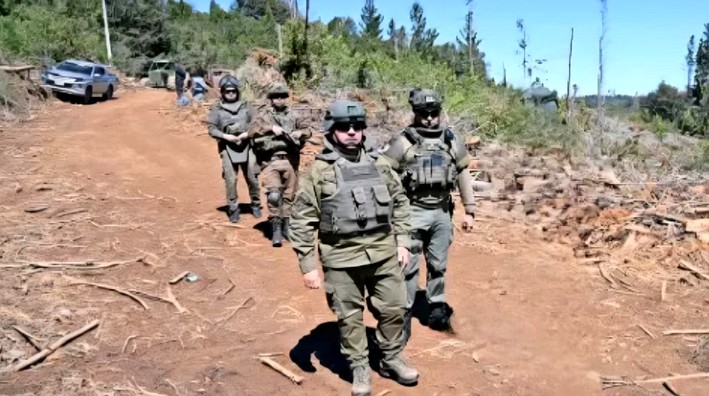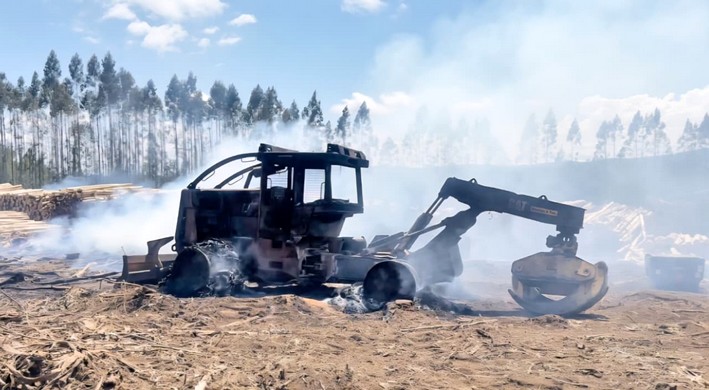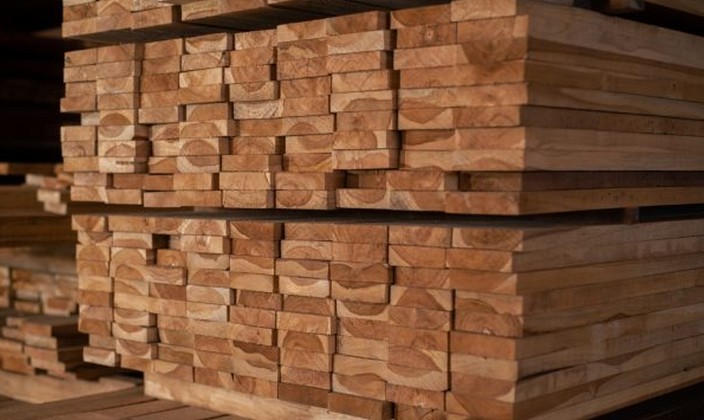Radiata Pine, the Prince of Pines, a Tree That Could Lead Chile to Carbon Neutrality
Roberto Ipinza Carmona, a forestry engineer from the University of Chile, a Doctor of Forestry Engineering, and a specialist in conservation and genetic improvement techniques, highlighted the qualities of this species.
Chile faces a highly ambitious challenge: to become a carbon-neutral and climate-resilient country by 2050 at the latest—a date that, according to optimists, could even be moved forward if circumstances allow, as it will be reviewed every five years. Additionally, to address climate change, concrete actions have been established for 17 ministries.
However, this goal does not seem easy to achieve, as the afforestation rate has drastically declined, according to Roberto Ipinza Carmona, a forestry engineer from the University of Chile, a Doctor of Forestry Engineering from the Technical School of Forestry Engineering at the Polytechnic University of Madrid, Spain, former director of the Genetic Improvement Cooperative of the Austral University of Chile – CONAF and Forestry Companies, and former professor of Genetic Improvement at that institution.
He stated that, given the current pace of the country's forestry development, this goal will not be met, as the afforestation rate should exceed 100,000 hectares per year. Falling short of this will have consequences, especially for small and medium-sized timber businesses that also rely on radiata pine, a noble species.
"From the perspective of sustainable forest management, two aspects should be considered. First, there must be an emphasis on preventive management across Chile's entire forest sector—meaning zero tolerance for forest fires. This requires changing management systems while continuing with naturalized species. We cannot demonize radiata pine because having it is almost a blessing," emphasized the specialist in conservation and genetic improvement techniques, an international consultant who currently works as a researcher at the Forestry Institute (INFOR).
In his view, this species should be managed with some changes in its silviculture to prevent a single match from burning everything down.
On that note, as a second point, he believes radiata pine should hold a prominent place due to its dual ecological and productive importance—it is a "miracle tree" because it prevents erosion, is essential for timber production, captures carbon dioxide, and, if properly cared for, could help the country achieve carbon neutrality. "If this tree is not directly involved, no native or exotic species can surpass it. It is already naturalized and has characteristics that, if someone had tried to invent it through biotechnology, wouldn’t match its current form," said the Regional President of the College of Forestry Engineers of the Los Ríos Region.
-Based on what you’ve said, is there a negative perception of radiata pine? Could it be because, among other things, it was used to produce low-value items, making it harder to give it the recognition it deserves?
-Let me share an anecdote that illustrates the answer. A couple of hundred years ago in Italy, behind the Trevi Fountain, there was a convent where malaria spread. Some monks planted around 2,000 Eucalyptus globulus trees—another naturalized species in Chile—which reduced the water in the swamps and, consequently, the malaria transmitted by mosquitoes. The disease affecting humans ceased to be a major issue. Thus, this species saved the people of Rome from the disease. People became aware of this, and the idea spread worldwide. Something similar happens with radiata pine, very beneficially, because it captures CO2, prevents erosion—Chile's main environmental scourge.
Education
Ipinza added that years ago, New Zealand had a Sunday television channel dedicated to radiata pine, where the audience learned about the virtues of this tree, also called the "Prince of Pines." The program explained the processes and products derived from plantations, as people don’t necessarily know these things. However, it would be interesting for the state and/or private sector to collaborate on education.
He recalled that Chile once had a similar initiative, the "Forests for Chile" campaign, which sought to dignify radiata pine at schools, neighborhood associations, and trade organizations, among others. Its benefits were explained, especially since people don’t realize that the paper in their notebooks and books comes from naturalized species like pines or eucalyptus. Therefore, he stressed the need for education in a context where citizens demand knowledge.
"Countering radical environmentalism, which burns forests, is done through education. I was part of that campaign as a national and regional spokesperson and later as executive director of INFOR, where both public and private sectors were involved. I believe this virtuous alliance needs revitalizing because it’s key to having an objective view of Chile’s progress as a forestry nation over the last 70 years," he emphasized.
Deforestation
He also noted that for hundreds of years, many high-mountain areas have been deforested of native forests, losing vegetation that buffered extreme rainfall. These areas had to be recovered and replanted. "In the past, people also needed firewood—their only fuel for cooking, heating, building homes, and making railroad ties, among other uses. For centuries, firewood sustained humanity. Fortunately, eucalyptus has now reduced the degradation and pressure on native forests for this essential product. Thus, incentivizing the planting of naturalized species directly protects native forests," he pointed out.
He also observed that humans have built on ancient riverbeds, and now, with extreme climate events, nature is presenting the bill. For this and other reasons, it’s pertinent to reinforce afforestation in high mountains and riverbanks, among other areas.
-Is it too late to plant in those areas?
-No, it’s not too late; planting is still possible. An interesting example is Coyhaique, a city that suffered floods, landslides, and avalanches after native forest fires stripped the land of vegetation. CONAF intervened on Divisadero Hill, reforesting and building engineering structures to prevent soil collapse, which threatened the town. This is a clear example of forest engineering actions to prevent human disasters. Where the soil was scorched, the only option was to plant pioneer species—conifers, exotic plantations—alongside hydraulic structures to prevent landslides and floods. This is common practice in Switzerland, Germany, and other countries. I mention this because if watersheds had been reforested, the forest would have buffered the devastating water flow during extreme events.
-Given all this, do you think forest conservation is at risk in Chile? The question stems from the recurring wildfires and erosion, whose consequences were partly suffered by many families during winter, with entire towns flooded.
-The risk of destruction is constant, but I believe the technical foundation and social need exist for preventive and proactive forest management. What we lack, as a great Spanish scientist proposed, is a trust-based management strategy. I believe we must align with this across all public and private organizations and remember that trees—those living wonders that produce oxygen and under whose shade we take refuge—have no religion or political preferences. We must shift the paradigm toward participatory forest management based on trust, a vital point.

















